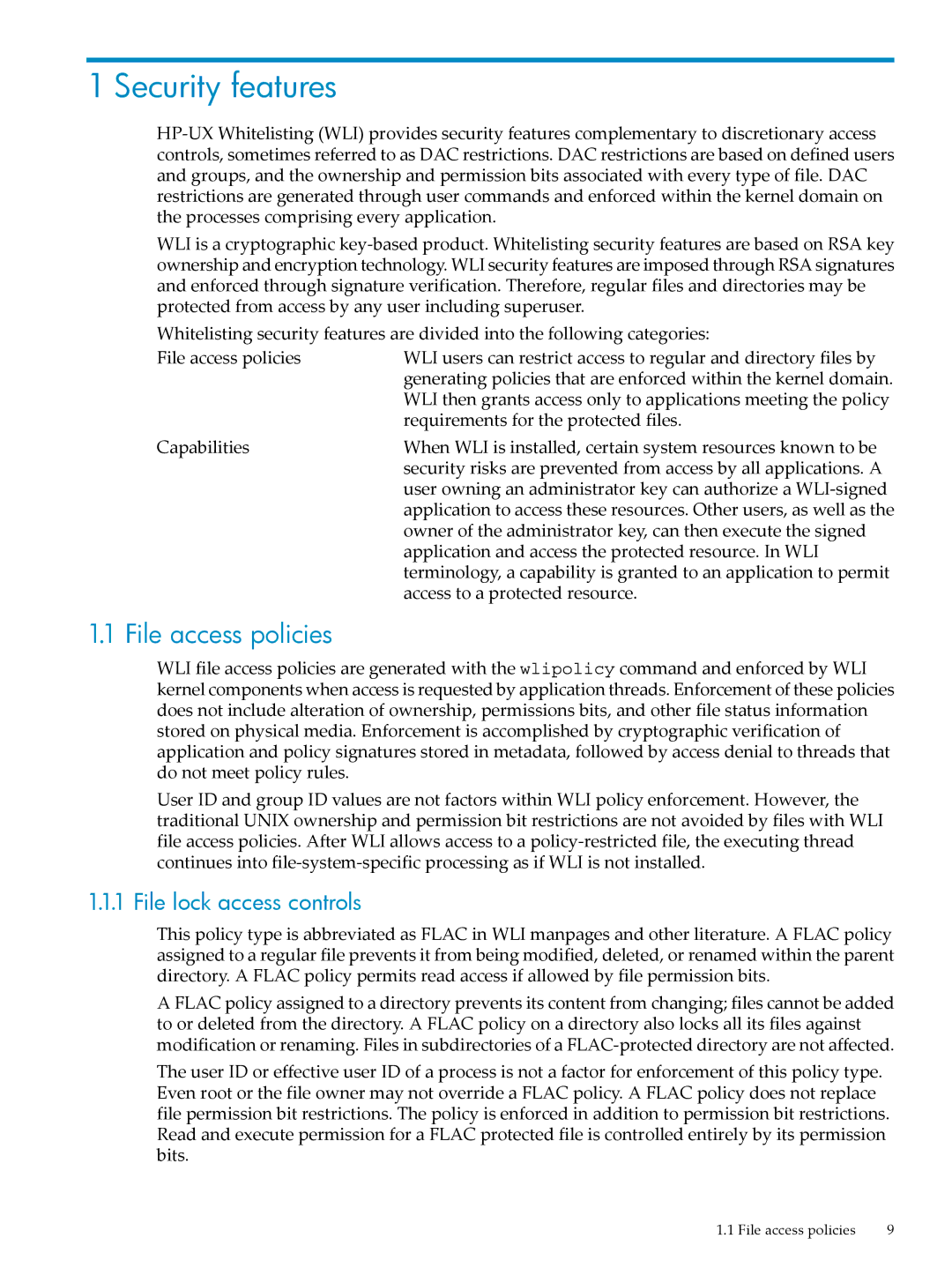1 Security features
WLI is a cryptographic
Whitelisting security features are divided into the following categories:
File access policies | WLI users can restrict access to regular and directory files by |
| generating policies that are enforced within the kernel domain. |
| WLI then grants access only to applications meeting the policy |
| requirements for the protected files. |
Capabilities | When WLI is installed, certain system resources known to be |
| security risks are prevented from access by all applications. A |
| user owning an administrator key can authorize a |
| application to access these resources. Other users, as well as the |
| owner of the administrator key, can then execute the signed |
| application and access the protected resource. In WLI |
| terminology, a capability is granted to an application to permit |
| access to a protected resource. |
1.1 File access policies
WLI file access policies are generated with the wlipolicy command and enforced by WLI kernel components when access is requested by application threads. Enforcement of these policies does not include alteration of ownership, permissions bits, and other file status information stored on physical media. Enforcement is accomplished by cryptographic verification of application and policy signatures stored in metadata, followed by access denial to threads that do not meet policy rules.
User ID and group ID values are not factors within WLI policy enforcement. However, the traditional UNIX ownership and permission bit restrictions are not avoided by files with WLI file access policies. After WLI allows access to a
1.1.1 File lock access controls
This policy type is abbreviated as FLAC in WLI manpages and other literature. A FLAC policy assigned to a regular file prevents it from being modified, deleted, or renamed within the parent directory. A FLAC policy permits read access if allowed by file permission bits.
A FLAC policy assigned to a directory prevents its content from changing; files cannot be added to or deleted from the directory. A FLAC policy on a directory also locks all its files against modification or renaming. Files in subdirectories of a
The user ID or effective user ID of a process is not a factor for enforcement of this policy type. Even root or the file owner may not override a FLAC policy. A FLAC policy does not replace file permission bit restrictions. The policy is enforced in addition to permission bit restrictions. Read and execute permission for a FLAC protected file is controlled entirely by its permission bits.
1.1 File access policies | 9 |
